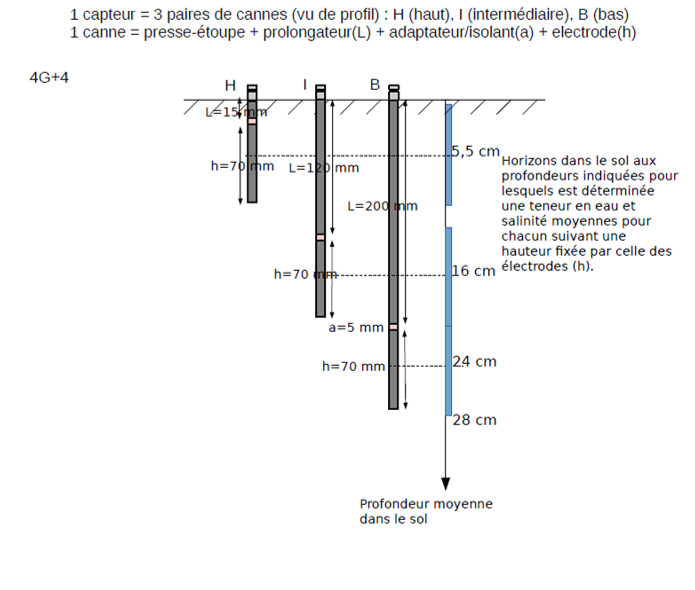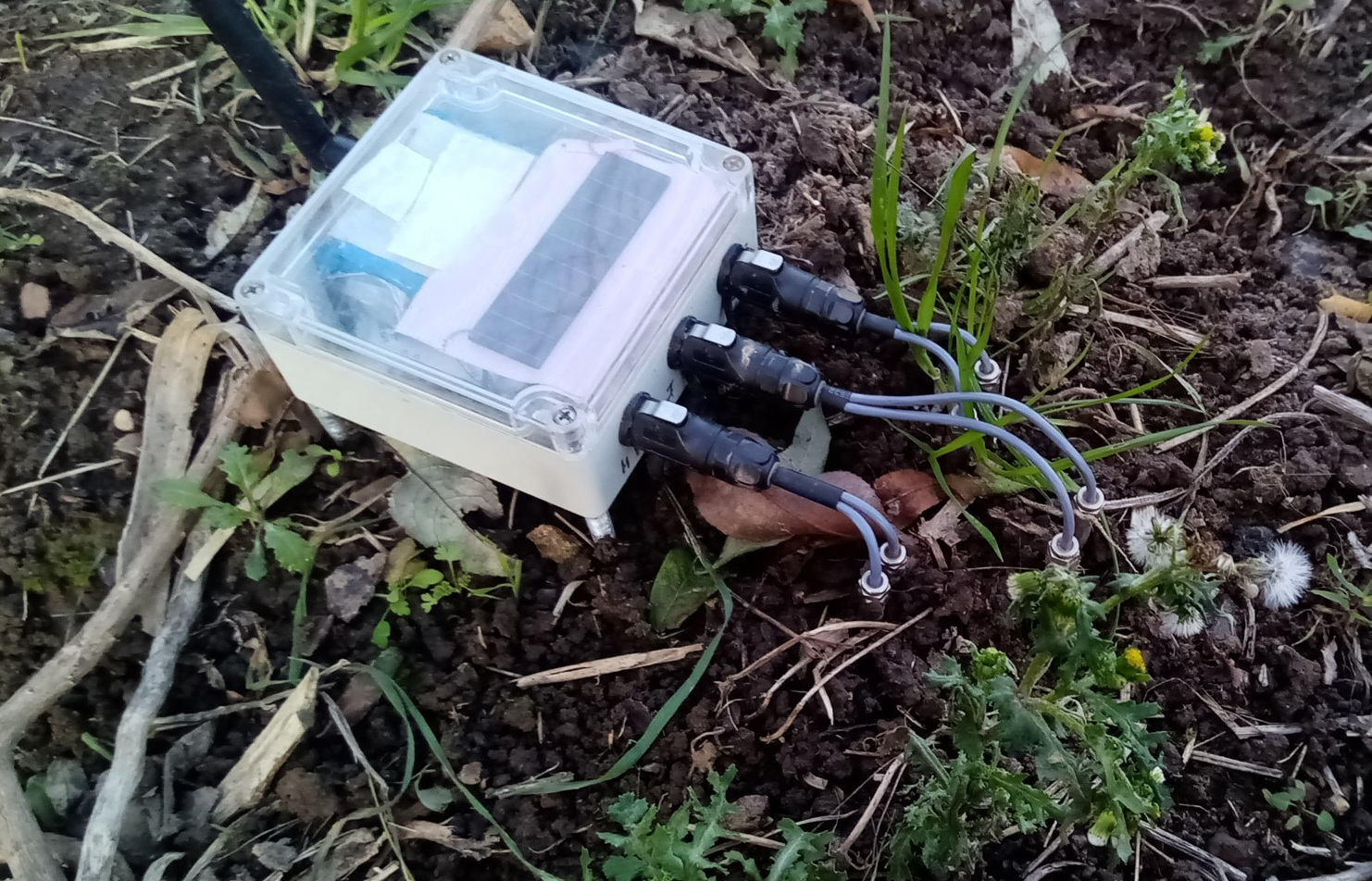Soil water content measurement
Soil water content plays a crucial role in energy and water exchanges between the atmosphere and the land surface. This variable is highly dynamic in both space and time—even within a single watershed (ranging from less than 1 km² to over 100 km²) and throughout the year. Capturing this variability and its importance requires a network of in-situ sensors continuously measuring soil conditions, preferably at multiple depths within the top 50 cm of soil. These requirements call for simple, robust, and autonomous sensor networks.
The HYMENET (HYdrology MEasurement NETwork) instrument developed in TERRA FORMA builds on instrumentation research carried out at IPGP and under the Equipex+ CRITEX program. It led to a first prototype based on the sensitivity of soil dielectric permittivity to water content. To reduce typical measurement biases associated with this principle, the chosen technique uses a self-balanced admittance bridge that linearly measures both permittivity and conductivity.
The sensor probe consists of three pairs of rods of different lengths inserted vertically into the soil. These rods are connected to a single control box housing the electronics. Using established laws—independent of the sensor—and the measured permittivity and conductivity, soil water content and salinity can be derived. Measurements are taken at three different soil layers, providing a vertical profile and allowing for estimation of water volume variations and distribution over time. Depth and thickness of the horizons are defined by the geometry of the rods (each channel can measure at two different depths). Another configuration allows monitoring down to 60 cm depth. The sensor is also being configured to measure temperature profiles using a thermocouple rod.
These probes benefit from recent advances in electronics and information and communication technologies : they are autonomous and LoRaWAN-connected. A microcontroller and embedded software manage all operations (scheduled acquisition, preprocessing, storage, data transmission). Profile measurements are transmitted immediately, with an acquisition interval of 5 to 15 minutes. Despite high resolution, the measurement circuits and LoRa communication have low power consumption ; two or three lithium cells and a small solar panel are sufficient for months of autonomous operation.
These sensors are also suitable for professional applications such as irrigation management, monitoring concrete curing and aging, compost maturation, or humidity monitoring in storage silos.
Updated on 20 juin 2025





